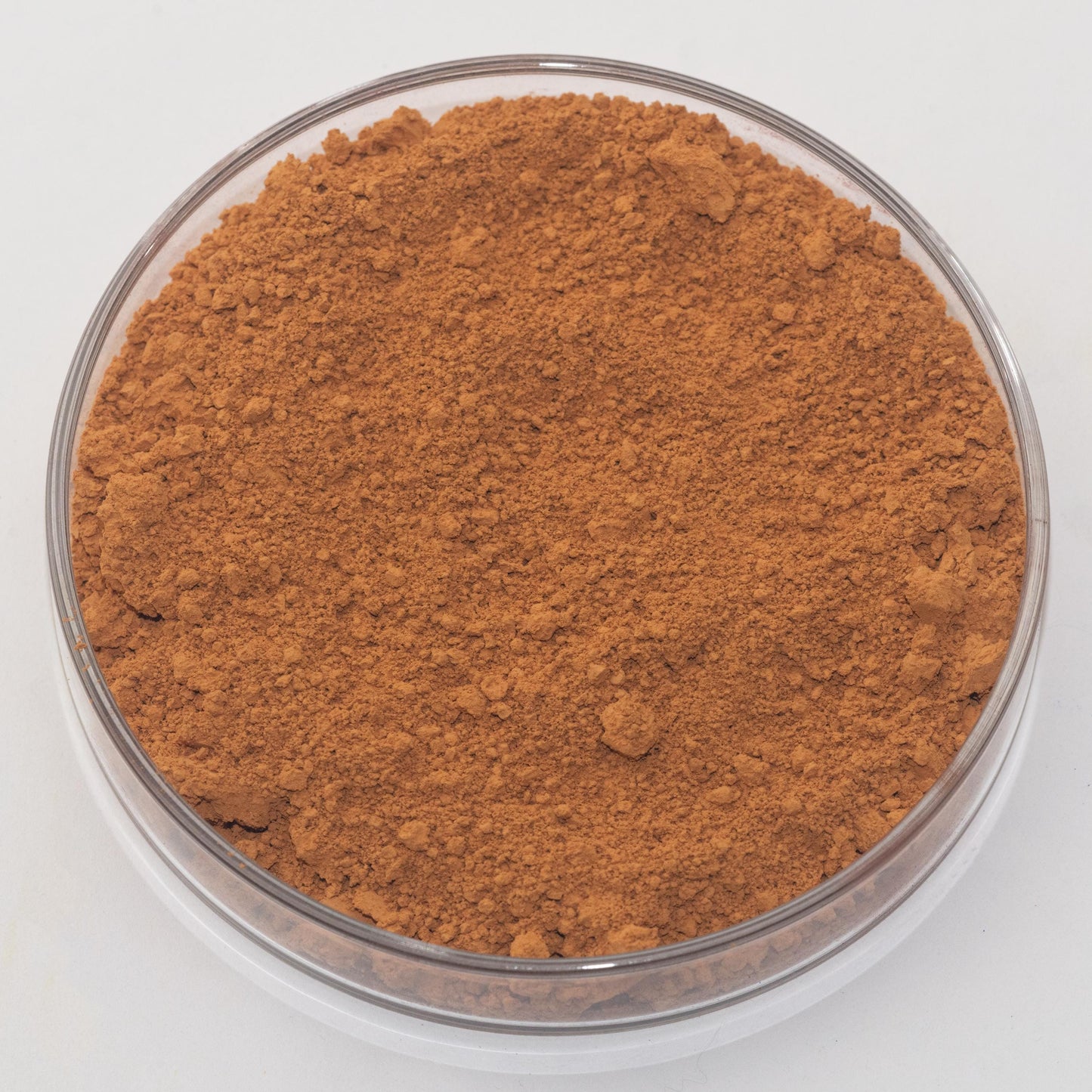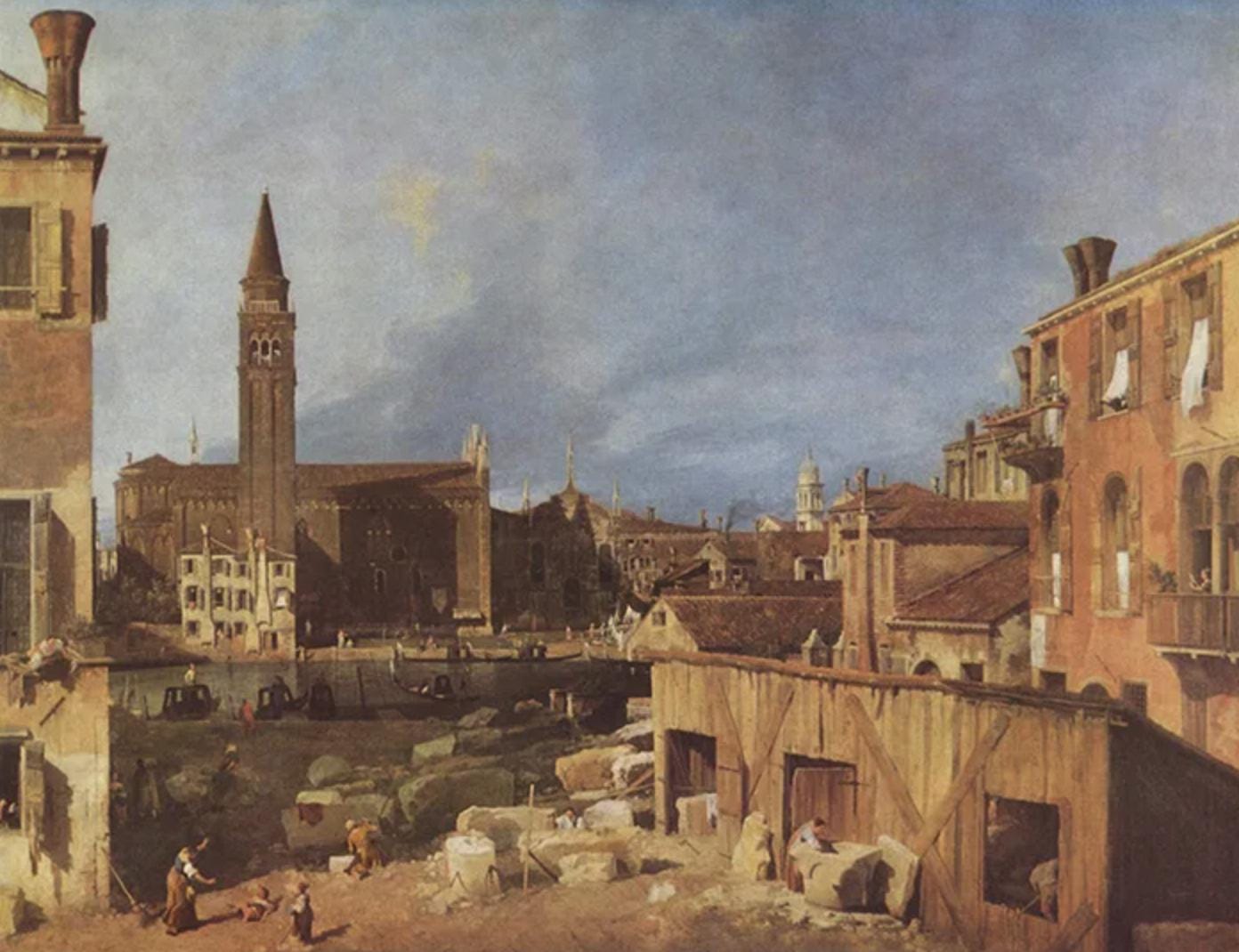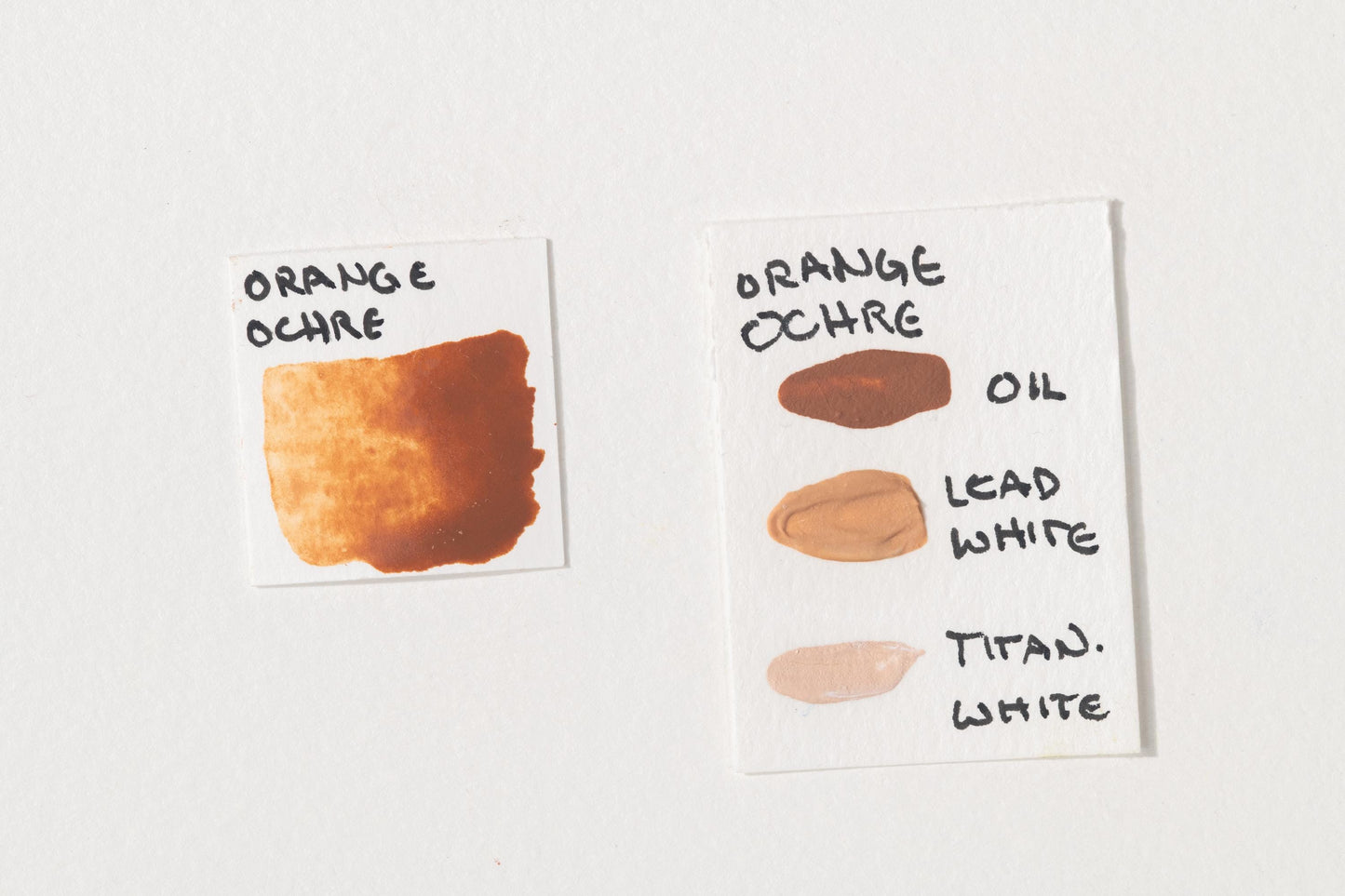Orange Ochre
Orange Ochre
Couldn't load pickup availability
Share



Description
Orange Ochre is a natural, handmade single earth pigment made through a ancient historical process of grinding raw earth sourced from the Vaucluse region of France. As the only natural orange shade among the Vaucluse ochres, this natural pigment has a unique, warm orange hue.
With a soft yet vibrant orange tone, this pigment offers exceptional stability, opacity, and lightfastness, making it ideal for fresco, oil, watercolor, and tempera painting. Its iron-rich composition provides a deep, earthy warmth that blends beautifully with other natural pigments, creating harmonious, organic color transitions.
Compared to synthetic oranges, Orange Ochre delivers a soft, earthy vibrancy that is both striking and historically authentic. Its great texture and high coverage make it a valuable addition to any artist’s palette, particularly for landscapes, portrait undertones, and historical restoration work.
History
Ochre has been one of the oldest pigments used in human history, dating back over 100,000 years. Prehistoric cave paintings, including those at Lascaux, prominently feature ochre pigments in shades of yellow, red, and brown. Orange ochre, though rarer, has been used in ancient Egyptian murals, Roman frescoes, and medieval manuscript illumination.
The Vaucluse region of France became a major center for ochre extraction in the 18th and 19th centuries, supplying artists and artisans with high-quality earth pigments. French ochres, prized for their purity and stability, became a staple in European painting traditions, from Renaissance masterpieces to 19th-century Impressionist works. In the pictured artwork 'Stonemason's Yard' by Canaletto, orange ochre is used for the rich terracotta color of the buildings for the warm orange glow.
Today, Orange Ochre remains a sought-after pigment for artists seeking natural, warm hues with historical authenticity. It continues to be used in fine art, conservation, and natural paint-making, preserving the rich legacy of ochre pigments.
Health and Safety
Precautions:
Keep out of reach of children and pets.
Do not consume.
Not for cosmetic or food usage.
Do not spray apply.
For further health information contact a poison control center.
Use care when handling dry pigments and avoid dust formation.
Use particular caution with fibrous, fine, or toxic pigments.
Do not eat, drink, or smoke near dry pigments. Avoid breathing in pigment dust and use a NIOSH-certified dust respirator with sufficient rating for dry pigment.
Wash hands immediately after use or handling.
If dust is likely, always wear protective clothing to keep out of eyes, lungs, off skin, and out of any contact as well as keep area ventilated.
This product may contain chemicals known by the State of California to cause cancer, birth defects, or reproductive harm.
Warnings and bottle information are abbreviated.
Pigment Information
Pigment Type: Natural (Iron Oxide) from minerals (Goethite and Hematite) (France)
Suitable Mediums: Watercolor, Oil, Tempera, Acrylic
Lightfastness: Best
Opacity: Semi-opaque
Other Names: Burnt Yellow Ochre, French Orange Earth, Ochre Orange, Ochre
Color Index Code: PY43
Image: 'Stonemason's Yard' by Canaletto from the National Gallery



